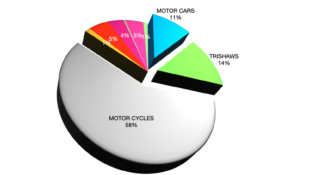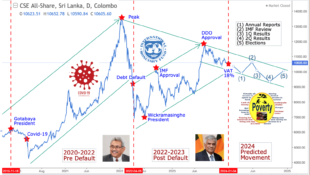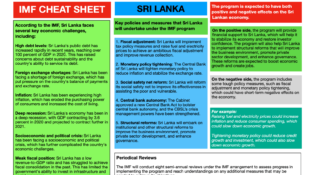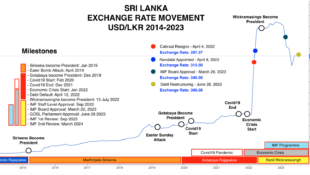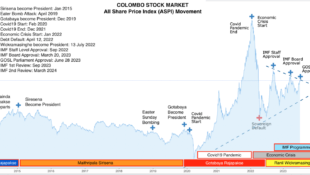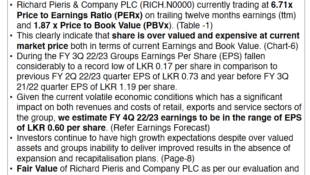Sri Lanka plans to raise up to 1.5 billion US dollars from a sovereign bond sale in 2017 and another billion dollars from a syndicated loan that is currently being negotiated, he said.
Sri Lanka may also get 250 to 300 million dollars from the sale of Mattala Airport. Other non-strategic asset sales and property may bring about a billion US dollars.
He said Sri Lanka hopes to repay some of the bunched up external debts in 2019 and beyond or extend their tenor, from money raised in 2017, Coomaraswamy said.
If a planned sale of Hambantota Harbour to China Merchants Ports goes ahead it could also bring in over a billion US dollars.
"In my view that is an important thing for the country, - leaving aside the development impact for the whole region - to get a billion dollars that comes straight into our reserves," Coomaraswamy said.
"Also because it is a built asset there will be no outflow in terms of capital goods etc."
Foreign direct investment is a key driver of imports and the trade deficit in Sri Lanka, as factories or other infrastructure is built with dollars coming through a non-merchandise section of the balance of payments.
If the money from port sale is used to bridge the budget deficit and used as part of government expenditure, it will similarly drive economic activity, imports and the trade deficit.
To build forex reserves permanently, the rupees generated when the dollars are taken into forex reserves have to be sterilized by a sell-down of Treasury bill holdings of the Central Bank. Alternatively other private credit has to be curtailed by a sell-down of central bank held bills.
Forex reserves can be built, regardless of whether there is a port sale or not if the Central Bank sells down its Treasury bill holdings and curtails domestic credit, analysts say. A large inflow will however allow forex reserves to be built without raising domestic interest rates.
Sri Lanka's forex reserves are lost in three ways.
When money is printed (Treasury bills are bought by the Central Bank creating new money) and then the exchange rate is defended, or when the exchange rate is defended and money is printed to fill liquidity shortages (sterilized forex sales).
Reserves are also lost, when government foreign loans are settled with reserves (taking bills in return which can be sold down to rebuild reserves) and when International Monetary Fund loans are repaid.
Forex reserves are built in three ways. When dollars are bought and the ensuing rupees are sterilized by selling down the Treasury bills stock (a sterilized forex purchases), when interest is earned on forex reserves, or when IMF loans are received. (Colombo/Feb09/2017)
 would enable you to enjoy an array of other services such as Member Rankings, User Groups, Own Posts & Profile, Exclusive Research, Live Chat Box etc..
would enable you to enjoy an array of other services such as Member Rankings, User Groups, Own Posts & Profile, Exclusive Research, Live Chat Box etc.. 
 Home
Home











